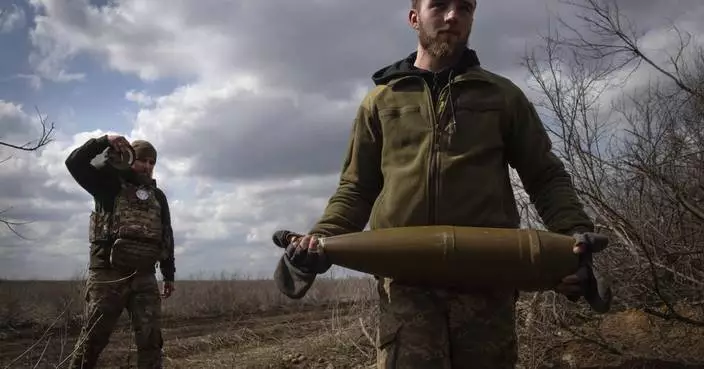William Barr has been attorney general for just one week but is on the cusp of staring down what will almost certainly be the most consequential decision of his long career: how much of the special counsel's findings to make public.
The position catapults him from Justice Department outsider free to theorize and speculate on special counsel Robert Mueller's investigation to the man at the center of the legal and political firestorm that will accompany its looming conclusion.
With Deputy Attorney General Rod Rosenstein preparing to exit after supervising the day-to-day investigation for nearly two years, and with Trump loyalist Matthew Whitaker now replaced in the top job, Barr is in the hot seat: He is responsible for navigating the department through congressional and public demands for details of Mueller's findings while dealing with a White House that may challenge, or even stifle, the conclusions.
Friends say Barr is accustomed to pressure-cooker situations by virtue of his experience as attorney general from 1991 to 1993 under President George H.W. Bush, and other senior Justice Department jobs. He oversaw the department's response when Los Angeles erupted in riots after the Rodney King verdict and when Cuban inmates took hostages at a federal prison in Alabama. He blessed Bush administration pardons in the Iran-Contra scandal and offered legal advice on the White House's ability to invade Panama.
In this case, though, no less than the fate of Donald Trump's presidency may hang in the balance of whatever Barr decides.
"I'm sure it's going to be a tough set of decisions and circumstances, but Bill doesn't shy away from tough situations," said former Justice Department colleague Timothy Flanigan. "He's not likely to sit there fretting over what does this mean for his legacy or his long-term political viability."
Although Barr carefully weighs difficult decisions and consults others before making them, once he's made them, "he doesn't kind of circle and fret," Flanigan said.
Key decisions are expected soon as Mueller shows signs of concluding his investigation into Russian interference in the 2016 U.S. presidential election and possible coordination with the Trump campaign.
Mueller is required to produce a confidential report to Barr that explains his decisions to pursue or decline prosecutions. That could be as simple as a bullet point list or as fulsome as a report running hundreds of pages. Barr will then have to decide how much of Mueller's findings should be disclosed to the public.
At his confirmation hearing last month, Barr was noncommittal about what he would do, though he said repeatedly that he supported making as much public as possible, "consistent with the law." He said in his congressional testimony that he will write his own report summarizing Mueller's findings for Congress and the public.
"I can assure you that, where judgments are to be made by me, I will make those judgments based solely on the law and will let no personal, political or other improper interests influence my decisions," he said.
Barr has noted that department protocol says internal memos explaining charging decisions should not be released. The attorney general is required only to say the investigation has concluded and describe or explain any times when he or Rosenstein decided an action Mueller proposed "was so inappropriate or unwarranted" that it should not be pursued.
Democrats could use Mueller's findings as the basis of impeachment proceedings and have threatened to subpoena them if they are withheld from Congress. It's not clear what the White House or Trump's lawyers may do to learn details of Mueller's findings. But they may try to block the public release of any report that they believe could expose private conversations between the president and his staff.
Hovering in the background is the 2016 decision by then-FBI Director James Comey to break Justice Department norms in the Hillary Clinton email investigation by publicly criticizing the Democratic presidential candidate even while saying she wouldn't be charged. Barr has said repeatedly that he disagrees with Comey's decision and considers it a mistake.
It's unclear what Mueller will place in his report and how far it will go in answering the central question of the investigation — whether the Trump campaign colluded with Russia — or how much he will reveal about whether the president sought to obstruct justice through firing Comey and other actions.
Barr made clear at his confirmation hearing that he agreed Russia had meddled in the 2016 election and that Mueller's investigation, contrary to Trump's claims, is not a "witch hunt."
But his view on the obstruction question is more nuanced. As a private citizen, he sent the Justice Department a memo last June arguing that Trump couldn't be investigated for firing Comey because a president has discretion to hire and fire subordinates. He has since sought to make clear that he believes that a president can be guilty of obstructing justice in other ways, such as by destroying evidence or instructing witnesses to lie.
It's not clear if Mueller will make recommendations about the president, though Barr has said he sees no reason to revisit Justice Department legal opinions that say a sitting president cannot be indicted.
Barr, who friends say was reluctant to return as attorney general, has made clear that at age 68, he feels empowered to do the right thing and not care about the consequences. But that doesn't mean it will be easy.
"I'm kind of glad it's him," Flanigan said, "and not me."
KYIV, Ukraine (AP) — A big, new package of U.S. military aid will help Ukraine avoid defeat in its war with Russia. Winning will still be a long slog.
The arms and ammunition in the $61 billion military aid package should enable Ukraine to slow the Russian army's bloody advances and block its strikes on troops and civilians. And it will buy Ukraine time — for long-term planning about how to take back the fifth of the country now under Russian control.
“Ultimately it offers Ukraine the prospect of staying in the war this year,” said Michael Clarke, visiting professor in war studies at King’s College London. “Sometimes in warfare you’ve just got to stay in it. You’ve just got to avoid being rolled over.”
The U.S. House of Representatives approved the package on Saturday after months of delays by some Republicans wary of U.S. involvement overseas. It was passed by the Senate on Tuesday, and President Joe Biden said he would sign it Wednesday.
The difference could be felt within days on the front line in eastern and southern Ukraine, where Russia’s much larger army has been slowly taking territory against massively outgunned Ukrainian forces.
The aid approval means Ukraine may be able to release artillery ammunition from dwindling stocks that it has been rationing. More equipment will come soon from American stocks in Poland and Germany, and later from the U.S.
The first shipments are expected to arrive by the beginning of next week, said Davyd Arakhamia, a lawmaker with Ukrainian President Volodymyr Zelenskyy’s Servant of the People party.
But opposition lawmaker Vadym Ivchenko, a member of the Ukrainian parliament’s National Security, Defense and Intelligence Committee, said logistical challenges and bureaucracy could delay shipments to Ukraine by two to three months, and it would be even longer before they reach the front line.
While details of the shipments are classified, Ukraine’s most urgent needs are artillery shells to stop Russian troops from advancing, and anti-aircraft missiles to protect people and infrastructure from missiles, drones and bombs.
What’s coming first is not always what front-line commanders need most, said Arakhamia, the Ukrainian lawmaker. He said that even a military giant like the U.S. does not have stockpiles of everything.
“The logic behind this first package was, you (the U.S.) finds our top priorities and then you see what you have in the warehouses,” Arakhamia said. “And sometimes they do not match.”
Hope for future breakthroughs for Ukraine still hangs on more timely deliveries of Western aid, lawmakers acknowledge.
Many experts believe that both Ukraine and Russia are exhausted by two years of war and won’t be able to mount a major offensive — one capable of making big strategic gains — until next year.
Still, Russia is pushing forward at several points along the 1,000-kilometer (600-mile) front, using tanks, wave after wave of infantry troops and satellite-guided gliding bombs to pummel Ukrainian forces. Russia is also hitting power plants and pounding Ukraine’s second-largest city, Kharkiv, which is only about 30 kilometers (some 20 miles) from the Russian border.
Ivchenko said the goal for Ukraine’s forces now is to “hold the line” until the bulk of new supplies arrive by mid-summer. Then, they can focus on trying to recapture territory recently lost in the Donetsk region.
“And probably ... at the end of summer we’ll see some movement, offensive movement of the Ukrainian armed forces,” he said.
Some military experts doubt Ukraine has the resources to mount even small offensives very soon.
The U.S. funding “can probably only help stabilize the Ukrainian position for this year and begin preparations for operations in 2025,” said Matthew Savill, director of military sciences at the Royal United Services Institute, a think tank.
In the best-case scenario for Ukraine, the American aid will give commanders time to reorganize and train its army — applying lessons learned from its failed summer 2023 offensive. It may also galvanize Ukraine’s allies in Europe to increase aid.
“So this just wasn’t about Ukraine and the United States, this really affected our entire 51-country coalition,” said U.S. Congressman Bill Keating, a Democrat who visited Kyiv on Monday as part of a four-member congressional delegation.
Zelenskyy insists Ukraine's war aim is to recapture all its territory from Russia — including Crimea, seized illegally in 2014. Even if the war ultimately ends through negotiation, as many experts believe, Ukraine wants to do that from as strong a position as possible.
Whatever happens on the battlefield, Ukraine still faces variables beyond its control.
Former U.S. President Donald Trump, who seeks to retake the White House in the November election, has said he would end the war within days of taking office. And the 27-nation Europe Union includes leaders like Hungarian President Viktor Orbán and Slovakian Prime Minister Richard Fico, who have opposed arming Ukraine.
Ukraine’s allies have held back from supplying some arms out of concern about escalation or depleting their own stocks. Ukraine says that to win the war it needs longer-range missiles it could use for potentially game-changing operations such as cutting off occupied Crimea, where's Russia's Black Sea fleet is based.
It wants Army Tactical Missile Systems, known as ATACMs, from the U.S. and Taurus cruise missiles from Germany. Both governments have resisted calls to send them because they are capable of striking targets deep within Russian territory.
The new bill authorizes the president to send Ukraine ATACMS “as soon as practicable.” It's unclear what that will mean in practice.
Sometimes, promised weapons have arrived late, or not at all. Zelenskyy recently pointed out that Ukraine is still waiting for the F-16 fighter jets it was promised a year ago.
Meanwhile, Russia is using its advantage in troops and weapons to push back Ukrainian forces, perhaps seeking to make maximum gains before Ukraine's new supplies arrive.
For weeks it has pummeled the small eastern city of Chasiv Yar, at the cost of 900 soldiers killed and wounded a day, according to the U.K. Ministry of Defense.
Capturing the strategically important hill town would allow them to move toward Sloviansk and Kramatorsk, key cities Ukraine controls in the eastern region of Donetsk. It would be a significant win for Russian President Vladimir Putin, who Western officials say is bent on toppling Ukraine’s pro-Western government.
Russian pressure was aimed not just at gaining territory, but on undermining Zelenskyy and bolstering critics who say his war plan is failing, said Clarke of King's College London.
The U.S. aid package decreases the likelihood of a political crisis in Ukraine, and U.S. Speaker Mike Johnson deserves credit for pushing it through Congress, he said.
"He held history in his hands,” Clarke said.
Follow AP’s coverage of the war in Ukraine at https://apnews.com/hub/russia-ukraine
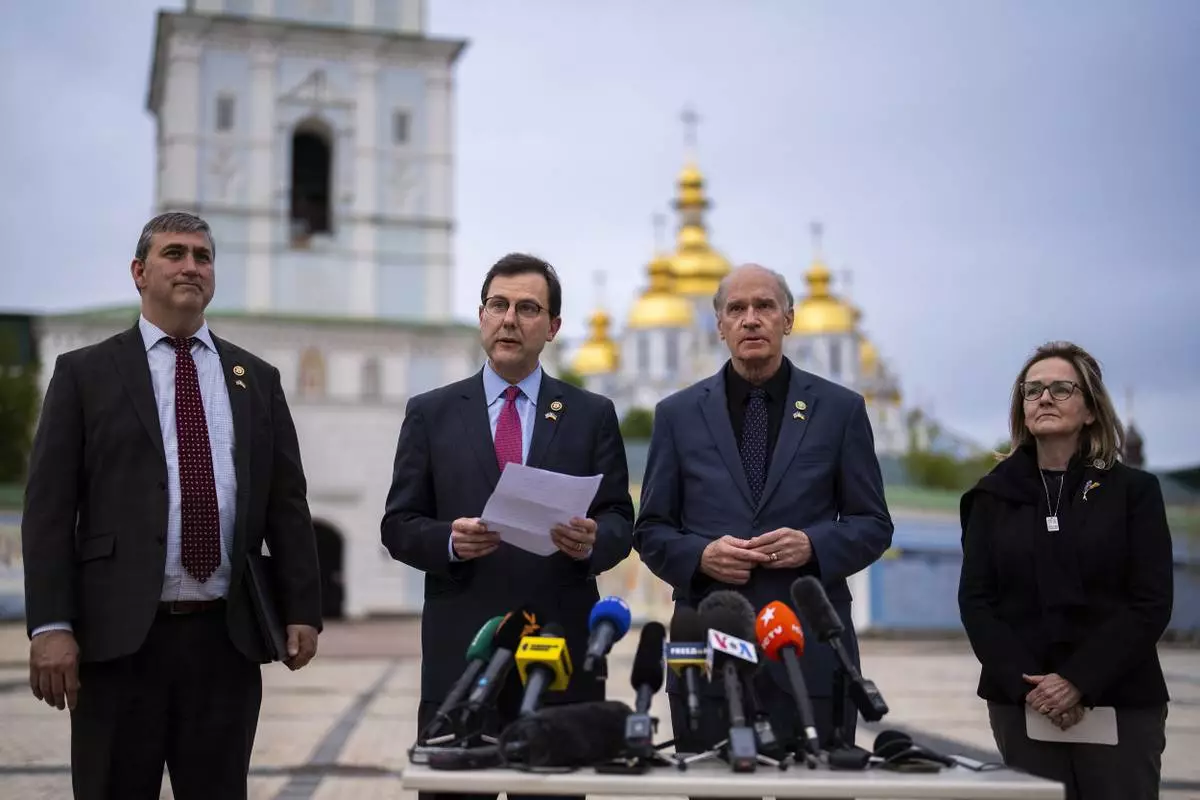
From left, U.S. representatives Nathaniel Moran, R-Tx, Tom Kean Jr, R-NJ, Bill Keating, D-Mass, and Madeleine Deane, D-Pa, talk to journalists during a joint news conference outside Saint Michael cathedral in Kyiv, Ukraine, Monday, April 22, 2024. A newly approved package of $61 billion in U.S. aid may prevent Ukraine from losing its war against Russia. But winning it will be a long slog. (AP Photo/Francisco Seco)

A volunteer makes a camouflage net at a facility producing material for Ukrainian soldiers in Kyiv, Ukraine, Monday, April 22, 2024. A newly approved package of $61 billion in U.S. aid may prevent Ukraine from losing its war against Russia. But winning it will be a long slog. (AP Photo/Francisco Seco)
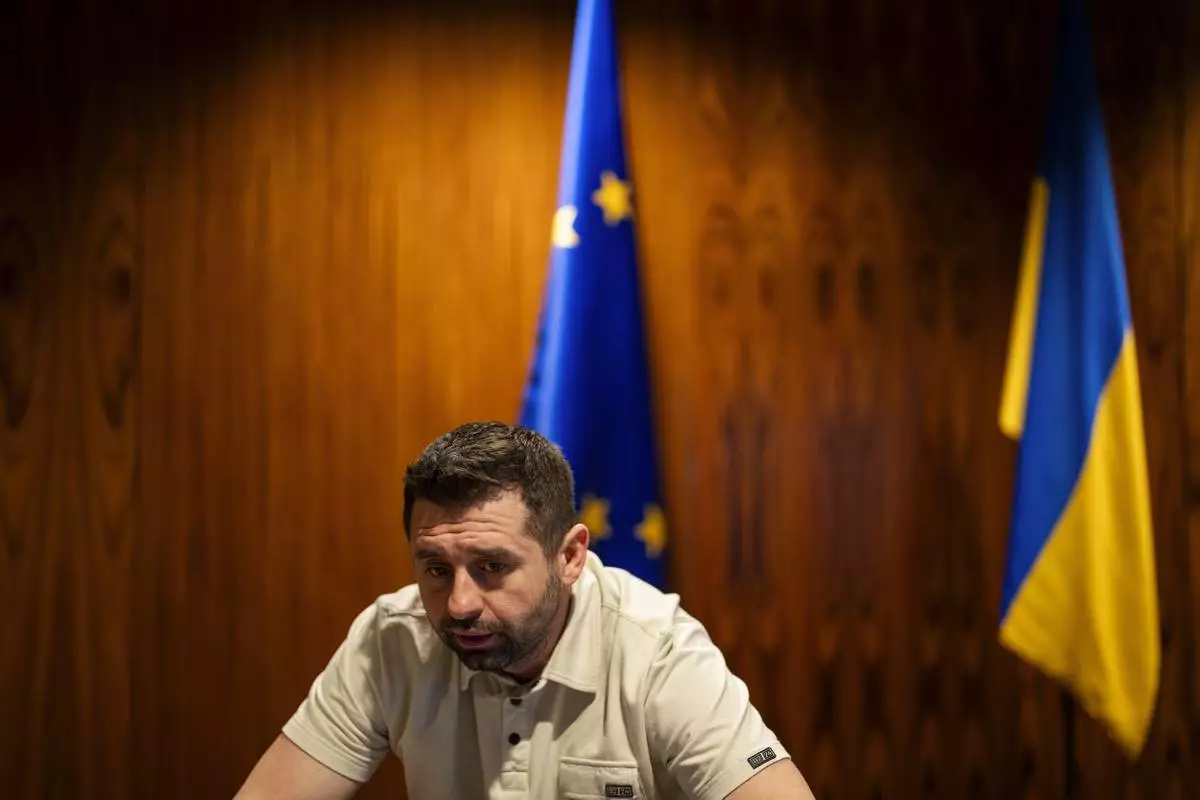
Davyd Arakhamia, a lawmaker with Ukrainian President Volodymyr Zelenskyy's Servant of the People party, talks during an interview with Associated Press in Kyiv, Ukraine, Monday, April 22, 2024. (AP Photo/Francisco Seco)

A woman rallies to raise awareness on the fate of Ukrainian prisoners of war in Kyiv, Ukraine, Sunday, April 21, 2024. (AP Photo/Francisco Seco)
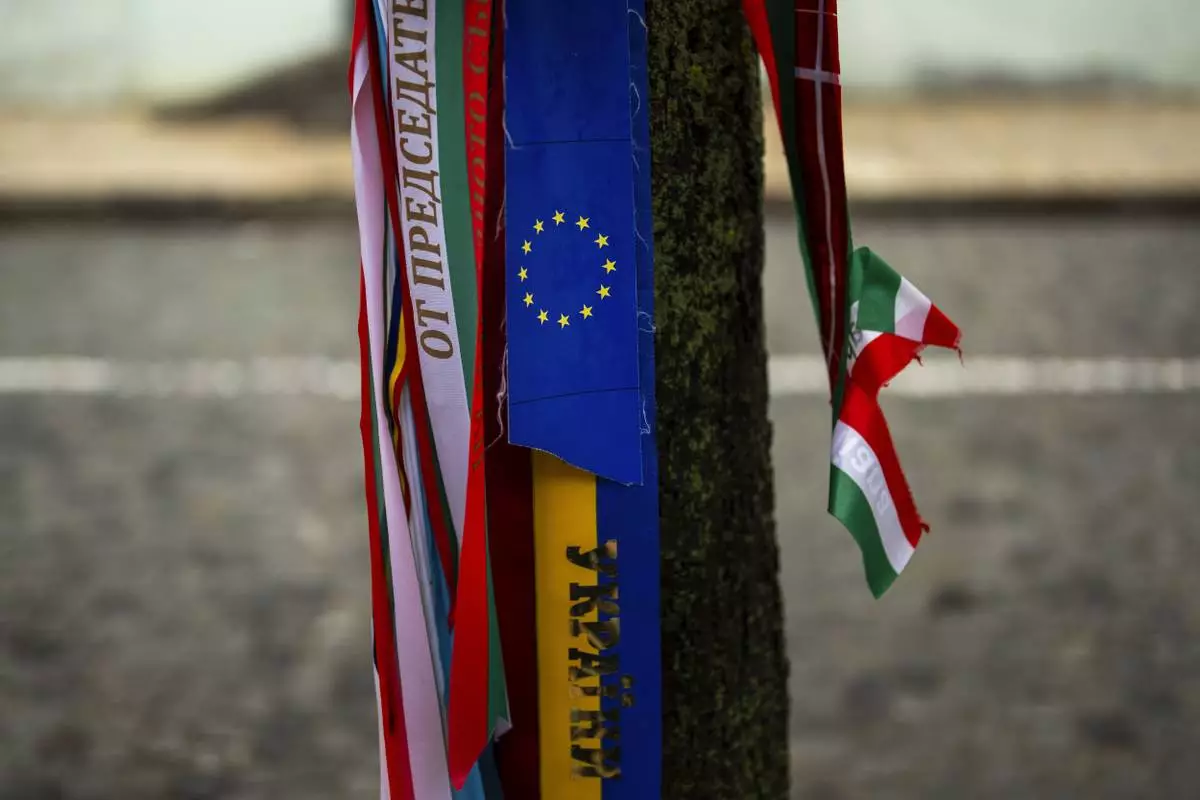
Ribbons with the colors of the European Union and Ukraine are attached to a tree next to memorial wall of Ukrainian soldiers killed during the war in Kyiv, Ukraine, Monday, April 22, 2024. (AP Photo/Francisco Seco)
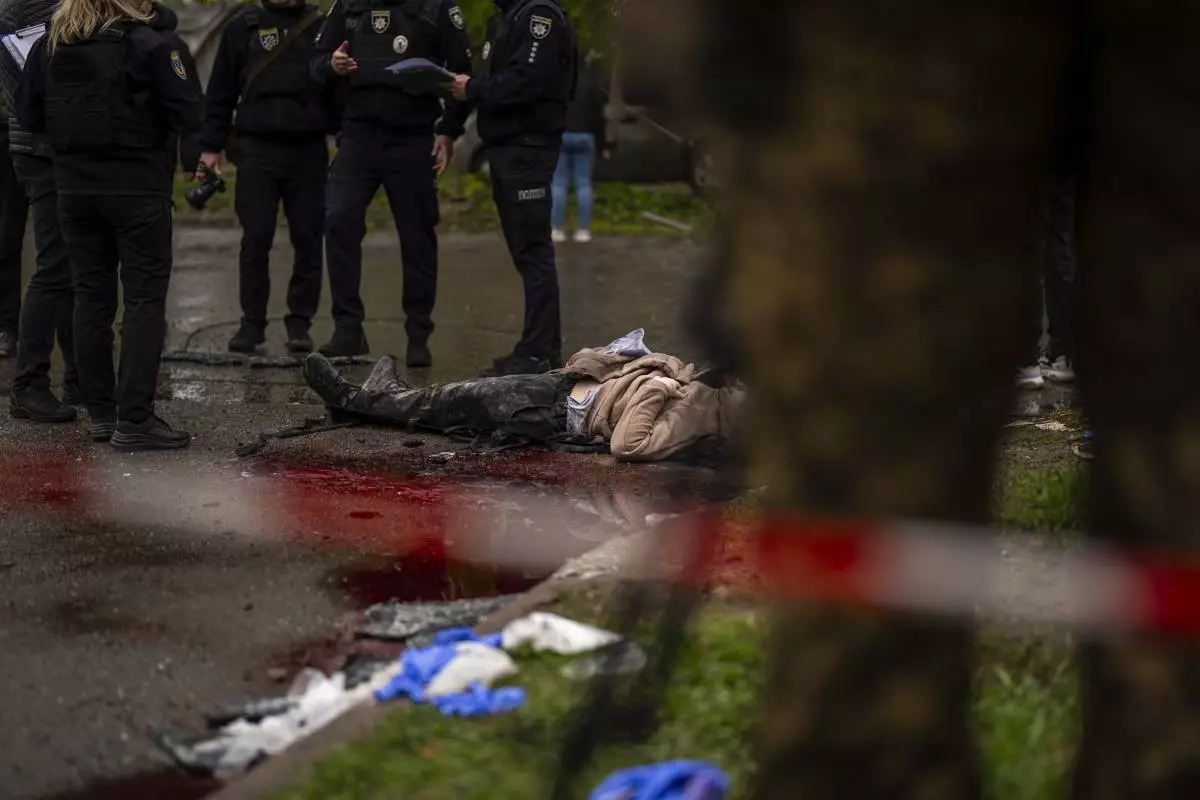
The body of a woman killed by Russian bombardment in Chernihiv, Ukraine, Wednesday, April 17, 2024. (AP Photo/Francisco Seco)

Soldiers carry the coffins of two Ukrainian army sergeants during their funeral in Lviv, Ukraine, Tuesday, April 16, 2024. (AP Photo/Francisco Seco)













